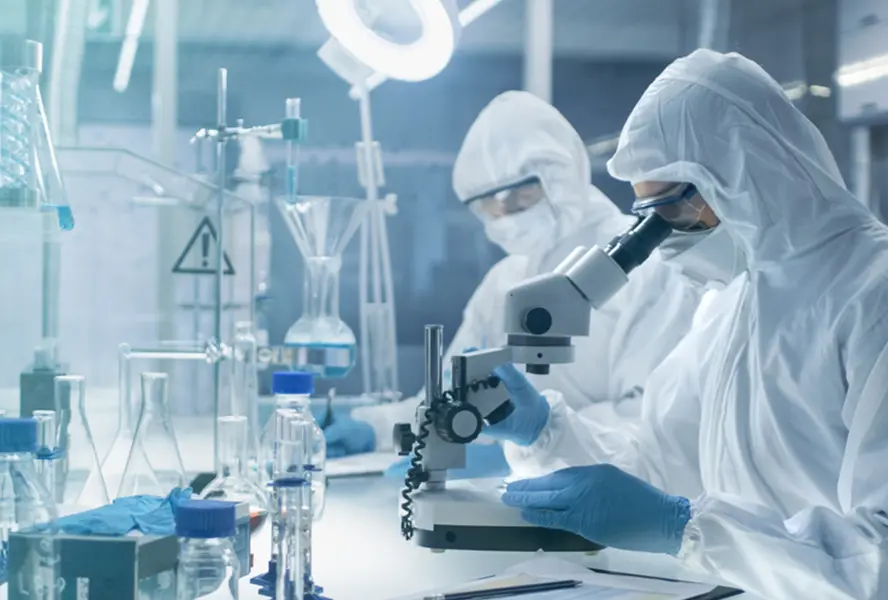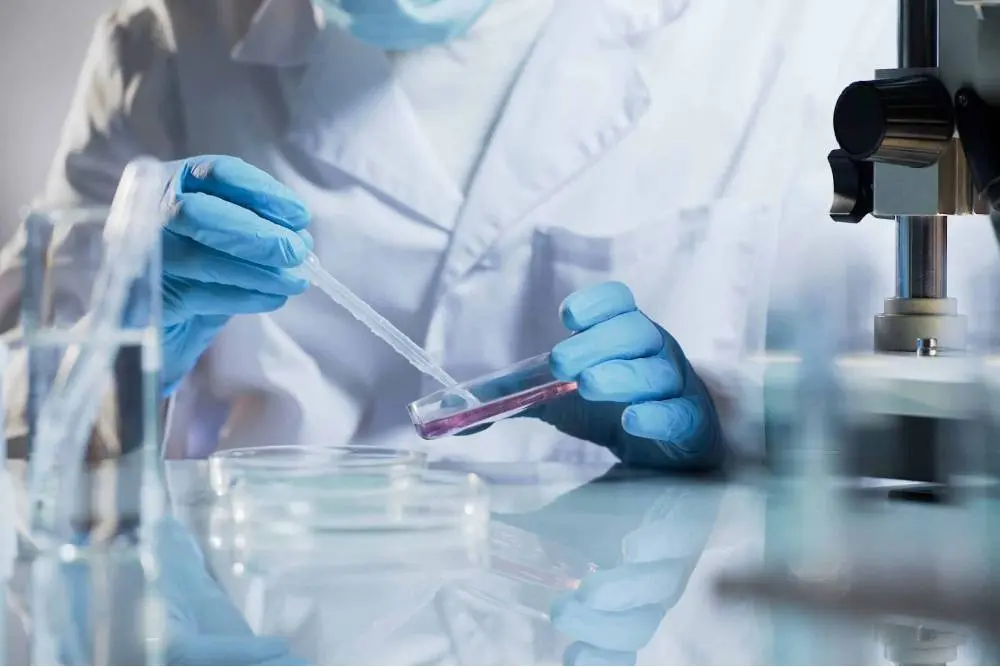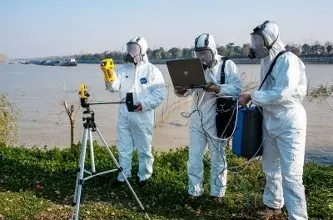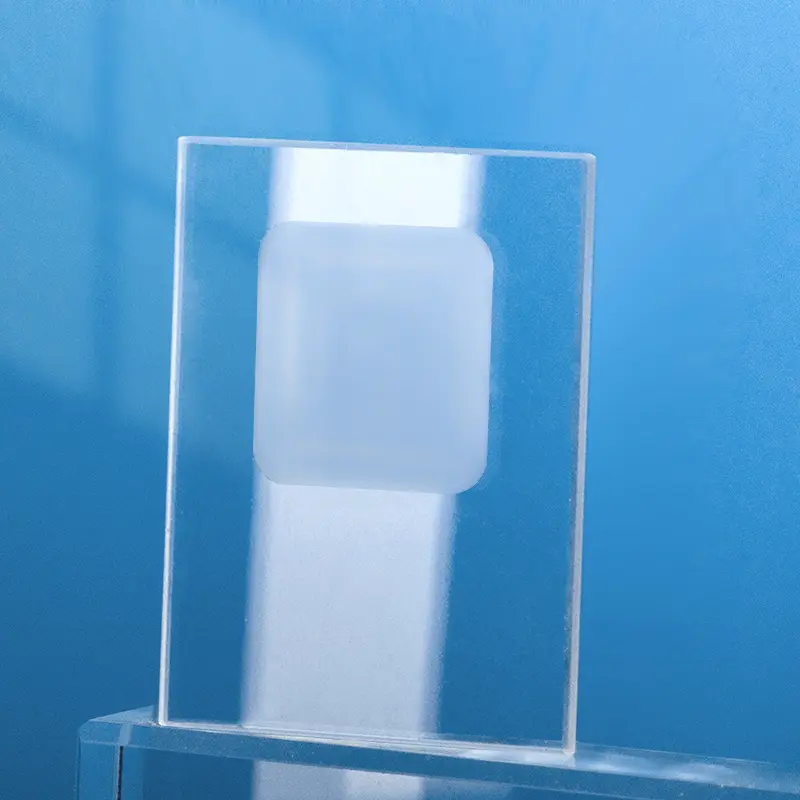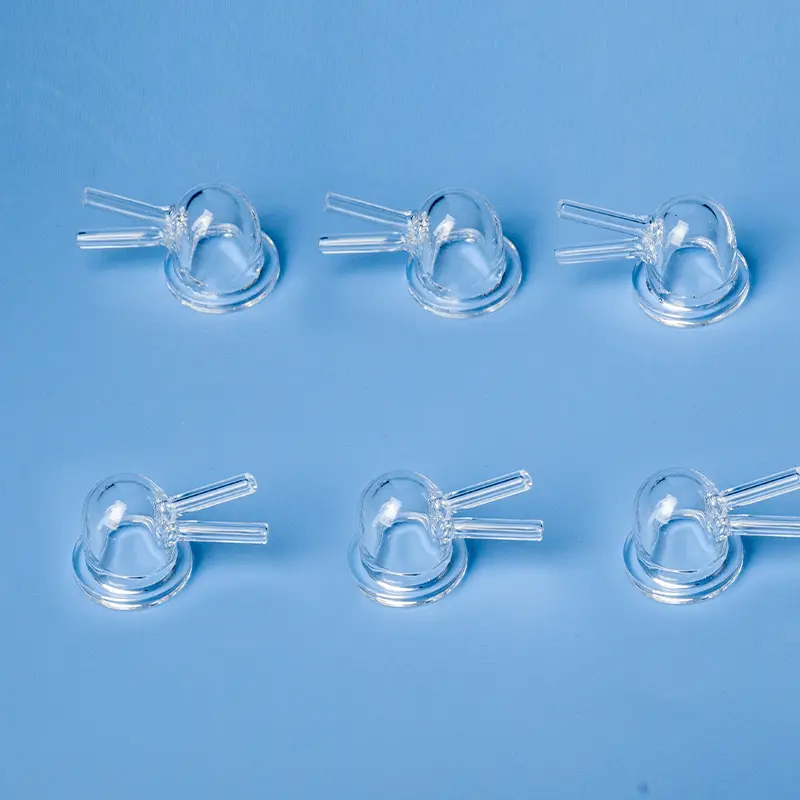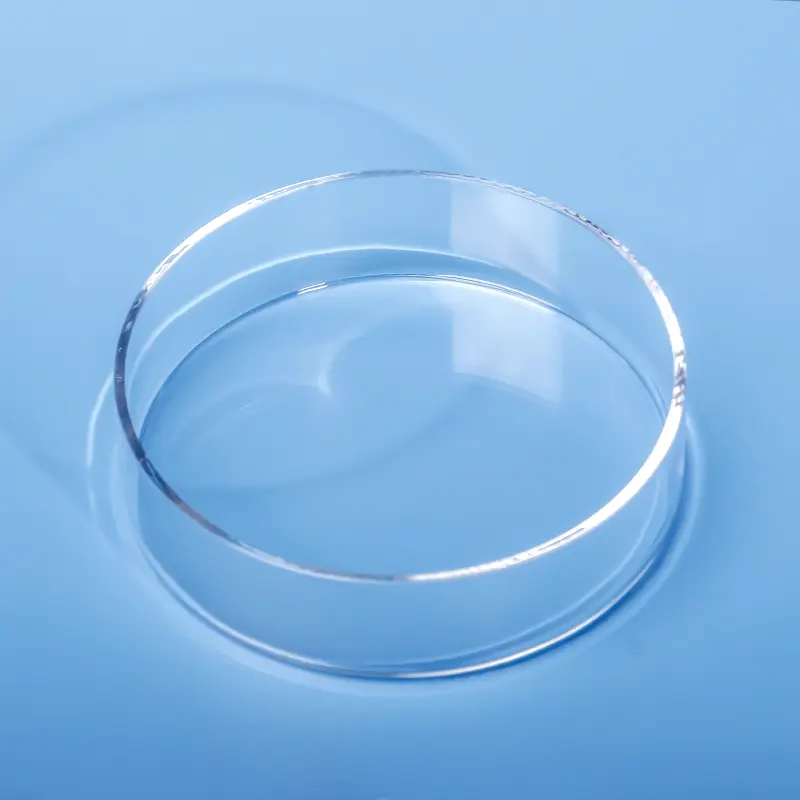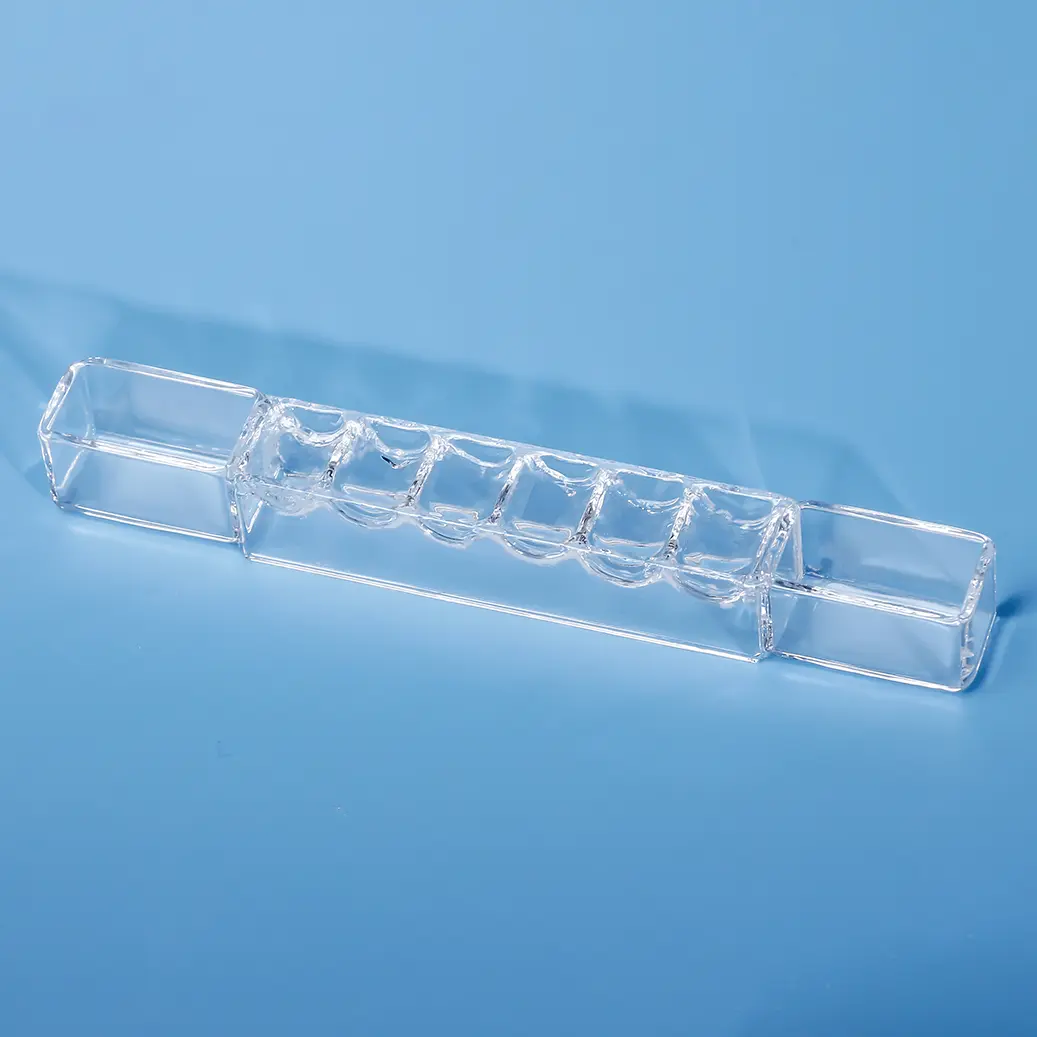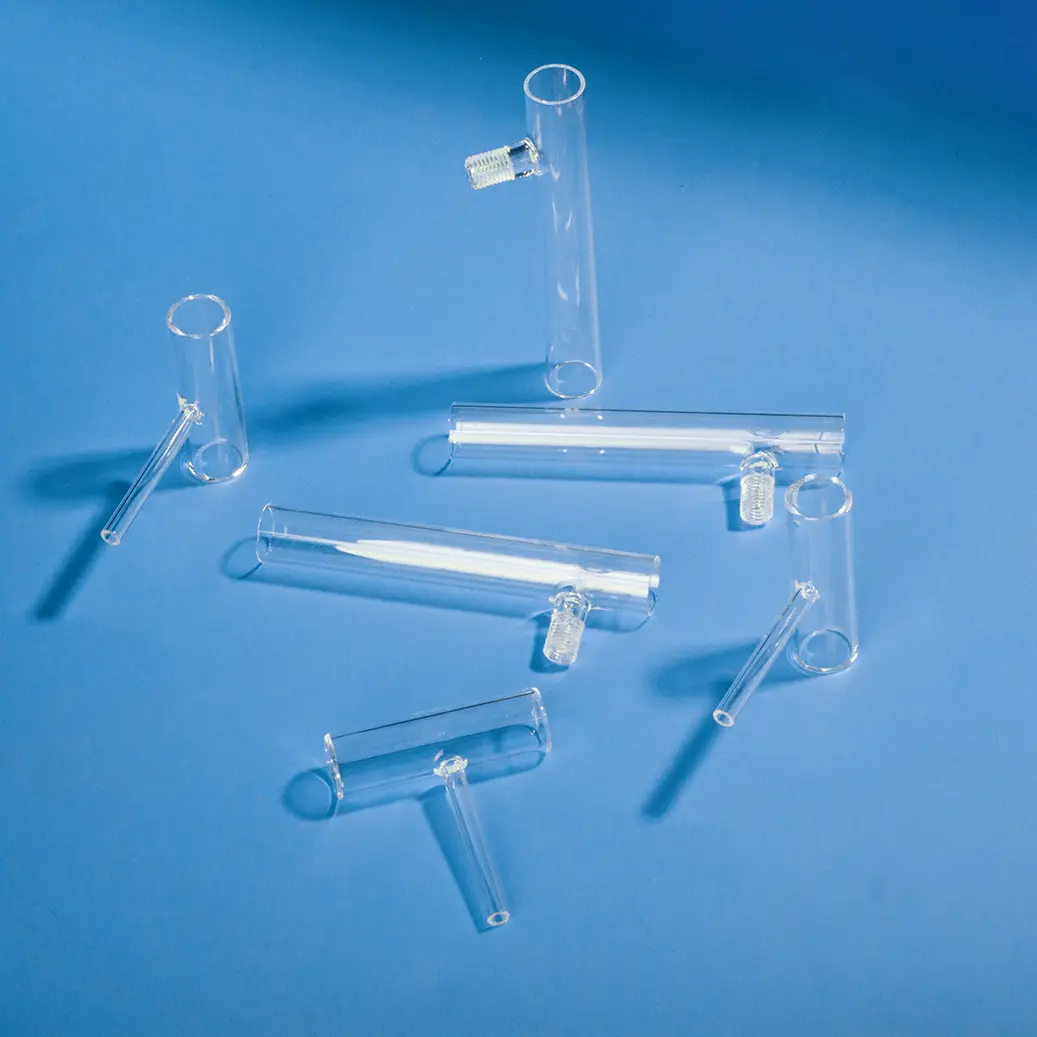Quartz cylindrical cuvettes are laboratory vessels made from ultraviolet fused silica glass, characterized by high light transmittance, excellent chemical resistance, and superior optical properties. They are suitable for spectroscopic analysis in both the ultraviolet and visible light regions. They are widely used in various industries, such as chemical, medical, and environmental fields, for the quantitative and qualitative analysis of substances, particularly for measuring substances that absorb in the ultraviolet light region.
| Property Content | Property Values |
|---|---|
| SiO2 | 99.99% |
| Density | 2.2×10³ kg/cm³ |
| Hardness | 5.5 - 6.5 Mohs' Scale 570 KHN 100 |
| Tensile Strength | 4.8×10⁷ Pa (N/mm2) (7000 psi) |
| Compression Strength | >1.1×10⁹ Pa (160,000 psi) |
| Coefficient of Thermal Expansion | 5.5×10⁻⁷ cm/cm·°C (20°C-320°C) |
| Thermal Conductivity | 1.4 W/m·°C |
| Specific Heat | 670 J/kg·°C |
| Softening Point | 1730°C (3146°F) |
| Annealing Point | 1210°C (2210°F) |
| Strain Point | 1120°C (2048°F) |
| Work Temperature | 1200°C (2192°F) |
| Electrical Resistivity | 7×10⁷ ohm cm (350°C) |
| Size | Customized |
| Logo | Customized Logo Accept |
High Light Transmittance
Quartz cuvettes have extremely high light transmittance in the ultraviolet to visible light regions, particularly in the ultraviolet region. This is essential for experiments that require precise measurements within this wavelength range.
Excellent Chemical Resistance
The quartz material is resistant to strong acids, bases, and organic solvents, ensuring the stability and durability of the cuvettes in a variety of chemical environments.
Precise Optical Properties
The optical surfaces of quartz cuvettes are precision-machined to ensure accuracy and repeatability in spectroscopic analysis.
Wide Applicability
These cuvettes are compatible with various spectroscopic instruments, such as spectrophotometers, and can be used for quantitative and qualitative analysis of substances in both the 200-400nm ultraviolet range and the visible light region.
Application Scenario
The high light transmittance of quartz cylindrical cuvettes in the ultraviolet region is essential for experiments requiring precise measurements in this wavelength range. Many biomolecules and chemical substances have characteristic absorptions in the ultraviolet region, which are crucial for their quantitative analysis and identification.
When using quartz cuvettes, avoid touching the optical surfaces to prevent contamination. Thoroughly clean and properly store them before and after use to maintain their performance. Also, because quartz material is fragile, handle with care to prevent damage.
When cleaning quartz cuvettes, gently wipe with a mild detergent and a soft cloth, avoiding hard brushes or abrasives that could scratch the surface. After cleaning, thoroughly rinse and air-dry or wipe with a lint-free cloth. For long-term storage, store them in a suitable cuvette box, avoiding direct sunlight and high-temperature environments to extend their lifespan.
Frequently asked questions
Quartz glass is a hard and brittle material with excellent physical and chemical properties, extremely high mechanical hardness, good electrical insulation, high temperature and corrosion resistance, low and stable delay performance, good light transmittance, etc. It is widely used in semiconductors, optics, electricity, chemistry, aerospace, automobiles and other fields. Hard and brittle materials are difficult to process, and many fields urgently need cutting processes with small edge collapse, less material loss, low cross-section roughness, and a wide cutting thickness range. The traditional cutting method of quartz glass is mechanical cutting, that is, wheel cutting. Non-traditional cutting methods include water jet cutting, electrochemical discharge wire cutting, continuous laser cutting, etc. Mechanical cutting has low cost, but the contact between the wheel and the material causes large tool wear, and the material is easily contaminated by the tool. Quartz glass is prone to edge collapse, microcracks, and residual stress, which affects the strength and performance of the material! It is difficult to achieve curve cutting and requires post-processing, such as grinding and polishing. Laser cutting does not directly contact the material, has no contact stress, and can perform complex curve cutting. Picosecond laser has the advantages of small spot diameter, high precision, short action time with the material, and small action area, and is suitable for the processing of hard and brittle materials.
。


